Archive

Western faculty, graduate students, and guest lectures from academia, the space industry and government present new discoveries, mission-specific opportunities, interesting training initiatives as well as industry-specific policies, challenges, and prospects with the intention of informing and engaging participants in discussions about relevant topics in planetary science and space exploration.
Upcoming Webinars & Forums
Past Webinars & Forums
2023 Past Monthly Forums
The Global Meteor Network: A planet-sized scientific instrument - Dr. Denis Vida
January 27th, 2023 | 12:30 - 1:30 PM | PAB 100
The Global Meteor Network (GMN) is a collection of highly sensitive low-cost meteor cameras (>750 automated meteor systems in over 45 countries). The GMN provides NASA with measurements of meteor showers to help predict their future activity and understand the meteoroid impact risk to spacecraft. The network also observes meteorite-dropping fireballs, rocks from space that make it to the ground and help build a compositional picture of the Solar System. In this talk, Denis Vida will talk about a unique carbonaceous meteorite that fell in the United Kingdom in 2021, and the discovery of a rocky meteoroid that came from the Oort Cloud and changed our understanding of how the Solar System was formed.
Bio:
Denis Vida is a meteor physics postdoctoral researcher at the University of Western Ontario, Canada. A software engineer turned astronomer, his main interests are the physical properties and dynamical characteristics of meteoroids and other small Solar System bodies.
2022 Western Space Monthly Forum
Entering an Era of Black Hole Discovery
Presented by: Dr. Daryl Haggard, McGill University Department of Physics/McGill Space Instituti
Date & Time: April 8th, 2022 | 12:30 - 1:30 PM ET
It’s been a fantastic decade for black hole studies, highlighted by the 2017 and 2020 Nobel Prizes in Physics. Multiple Galactic Center research groups, the Event Horizon Telescope, and LIGO/Virgo continue to bring rapid-fire new observations to sharpen our understanding of these exotic objects. I will discuss Sgr A*’s unique variability alongside other time domain phenomena in the Galactic Center, traced out over more than 20 years of observations from coordinated multi-wavelength campaigns. I will compare these detailed studies of Sgr A* to equally impressive multi-wavelength observations of M87*. I will also briefly explore how we can continue to push the frontiers of black hole research with existing and next-generation observatories.
Bio: Dr. Daryl Haggard is an Associate Professor of Physics at McGill University in the McGill Space Institute. She is a member of the New College of the Royal Society of Canada and holds a Canada Research Chair in Multi-messenger Astrophysics. Haggard and her team study the Galactic Centre and Sgr A*, electromagnetic counterparts to gravitational wave sources, accreting compact objects, and supermassive black holes, using multi-wavelength, multi-messenger, and time domain techniques. Haggard is a member of the Canadian Astronomical Society’s Joint Committee for Space Astronomy and Equity and Inclusion Committee, and has worked on many equity-related committees and projects over the course of her career.
Cochrane, ON STEM Outreach Weekend!
Date & Time: March 4th, 2022 | 12:30 - 1:30 PM ET
Dr. Sarah Gallagher, members from Western Indigenous Student Centre and Western Space students were hosted by Jason Michaud, CEO of Stardust Technology in Cochrane, ON on Feb. 18-21 for a weekend filled with STEM outreach activities. Join our panel discussion and learn about our activities in Cochrane, ON!
Operating the World's Largest Earth Observation Satellite Constellation
Presented By: Kelsey Doerksen
Date & Time: February 4th, 2022 | 12:30 - 1:30 PM ET
In this talk, Kelsey will detail how a small team of operators can manage 100s of satellites, how the satellite commissioning process works, and highlight the various tools and automations used to operate the fleet.
Bio: Kelsey Doerksen is a Space Systems Engineer in Satellite Operations at Planet, operating the world's largest Earth Observation satellite constellation. Planet has over 150 satellites in orbit collecting over 350 million square kilometers of imagery daily, with an unprecedented dataset of on average 1,300 images of every location on Earth’s landmass. Learn more.
2021 Western Space Weekly Webinar Schedule
September 10th 2021 - Welcome back Western Space!

Speakers: Dr. Jan Cami, Dr. Jayshri Sabrinathan, And Courtney Swinden provide updates on what the Istitute has been up to over the summer and were we are headed
September 17th 2021 -Cancelled
Following the horrific events of last Friday and the history of sexual violence committed against members of our Western community, we will be postponing today’s Western Space Webinar, which was scheduled to occur during the planned Western University Student Walk Out. We stand in solidarity with survivors and demand change.
October 1st 2021 - Updates from across the universe
Speaker: Dr. Phil Stooke
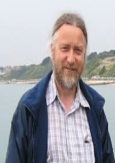
Dr. Stooke is a Professor Emeritus in the Department of Geography who helped found the Centre for Planetary Science and Exploration at Western, which has now become the Institute. He began his career mapping asteroids and small moons, and more recently he has been recording the history of lunar and Martian exploration. For years he ran a weekly Planet Club which covered news about planetary exploration, and now he helps host a monthly online session along the same lines with Drs. Tanya Harrison and Danny Bednar, both from Western.
Next year is looking like a big year for lunar exploration. Phil Stooke will look ahead at the landers anticipated during 2022 and especially their landing sites. Japan, Russia, India and the US are all sending landers to the Moon next year, with 8 missions to the surface currently anticipated. Where are they going? What are they doing? Who's going to be mapping the landing sites? (spoiler: Phil).
Register in advance for this webinar:
https://westernuniversity.zoom.us/webinar/register/WN_G6_eBs9FSzeKcaAn-44CSA
October 8th 2021 -HAPPY THANKSGIVING WEEKEND!

October 15th 2021 - New Insights into the Geology of Venus
Speaker: Dr. Paul Byrne
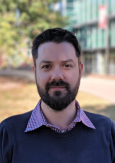 Byrne received his B.A. in geology, and Ph.D. in planetary geology, from Trinity College Dublin, Ireland. He was a MESSENGER postdoctoral fellow at the Earth and Planets Laboratory of the Carnegie Institution for Science in Washington, DC, and an LPI postdoctoral fellow at the Lunar and Planetary Institute in Houston, Texas. He is an Associate Professor of Earth and Planetary Sciences at at Washington University in St. Louis; before coming to WashU, he taught as an assistant and then associate professor at North Carolina State University. His research focuses on comparative planetary geology—comparing and contrasting the surfaces and interiors of planetary bodies, including Earth, to understand geological phenomena at the systems level. Byrne’s research projects span the solar system from Mercury to Pluto and, increasingly, to the study of extrasolar planets. He uses remotely sensed data, numerical and physical models, and fieldwork in analog settings on Earth to understand why planets look the way they do.
Byrne received his B.A. in geology, and Ph.D. in planetary geology, from Trinity College Dublin, Ireland. He was a MESSENGER postdoctoral fellow at the Earth and Planets Laboratory of the Carnegie Institution for Science in Washington, DC, and an LPI postdoctoral fellow at the Lunar and Planetary Institute in Houston, Texas. He is an Associate Professor of Earth and Planetary Sciences at at Washington University in St. Louis; before coming to WashU, he taught as an assistant and then associate professor at North Carolina State University. His research focuses on comparative planetary geology—comparing and contrasting the surfaces and interiors of planetary bodies, including Earth, to understand geological phenomena at the systems level. Byrne’s research projects span the solar system from Mercury to Pluto and, increasingly, to the study of extrasolar planets. He uses remotely sensed data, numerical and physical models, and fieldwork in analog settings on Earth to understand why planets look the way they do.
Abstract: With three new Venus missions recently announced by NASA and ESA, attention is once more turning to the second planet. In the past few years, a view has emerged of a much more dynamic world than we once thought. In this talk, I'll present an overview of our current understanding of Venus, followed by insights from two recent studies I've left to understand the planet's past and present properties—which can be tested by those new missions.
Register in advance for this webinar:
https://westernuniversity.zoom.us/webinar/register/WN_q3_oOidlQHOzYBtxSbqJwA
October 22nd 2021 - The Twinkle Space Mission: an update on the international collaborative exoplanet survey
Speaker: Max Joshua
 The Twinkle Space Mission is a space-based observatory that has been conceived to measure the atmospheric composition of exoplanets, stars and solar system objects. Twinkle’s collaborative multi-year global survey programs will deliver visible and infrared spectroscopy of thousands of objects within and beyond our solar system, enabling participating scientists to produce world-leading research in planetary and exoplanetary science. Twinkle’s growing group of international Founding Members have now started shaping the survey science program within focused Science Teams and Working Groups and will soon be delivering their first publications.
The Twinkle Space Mission is a space-based observatory that has been conceived to measure the atmospheric composition of exoplanets, stars and solar system objects. Twinkle’s collaborative multi-year global survey programs will deliver visible and infrared spectroscopy of thousands of objects within and beyond our solar system, enabling participating scientists to produce world-leading research in planetary and exoplanetary science. Twinkle’s growing group of international Founding Members have now started shaping the survey science program within focused Science Teams and Working Groups and will soon be delivering their first publications.
Twinkle will have the capability to provide simultaneous broadband spectroscopic characterisation (0.5–4.5µm) of the atmospheres of several hundred bright exoplanets, covering a wide range of planetary types. It will also be capable of providing phase curves for hot, short-period planets around bright stars targets and of providing ultra-precise photometric light curves to accurately constrain orbital parameters, including ephemerides and TTVs/TDVs present in multi-planet systems. This talk will present an overview of Twinkle’s mission status and discuss some example exoplanet surveys to highlight the broad range of targets the mission could observe, demonstrating the scientific potential of the spacecraft. It will also report on the work of Twinkle’s Exoplanet Science Team, which is formed of researchers from across the globe, including the University of Toronto, showcasing their science interests and the studies into Twinkle’s capabilities that they have conducted since joining the mission.
Register in advance for this webinar:
https://westernuniversity.zoom.us/webinar/register/WN_aJOdxw0eR3uHuDzi3chK-g
October 29th 2021 - Deep Ocean circulation history from sediments
Speaker: Dr. Brian Romans
 Dr. Brian Romans is an associate professor in the Department of Geosciences at Virginia Tech. He received his Ph.D. in Geological & Environmental Sciences from Stanford University, M.S. in Geology & Geological Engineering from Colorado School of Mines, and undergraduate degree in Geology from SUNY Buffalo. Brian has participated as a shipboard scientist on two IODP Expeditions (Expeditions 342 and 374).
Dr. Brian Romans is an associate professor in the Department of Geosciences at Virginia Tech. He received his Ph.D. in Geological & Environmental Sciences from Stanford University, M.S. in Geology & Geological Engineering from Colorado School of Mines, and undergraduate degree in Geology from SUNY Buffalo. Brian has participated as a shipboard scientist on two IODP Expeditions (Expeditions 342 and 374).
Abstract: Ocean circulation plays a critical role in the Earth’s climate system through the storage and transfer of heat and carbon dioxide. The North Atlantic and Southern Oceans are of particular interest because these are regions where deep-water components of global circulation develop. Overall patterns and functioning of modern oceanic circulation is relatively well understood, but significant uncertainty remains about circulation in the geologic past and during different climate regimes. Dr. Romans uses the deep-sea sedimentary record to reconstruct past ocean circulation and its relationship to past climatic and tectonic conditions. He integrates information from a broad range of spatial and temporal scales, from seismic-reflection data that reveals regional sedimentation patterns to high-resolution records based on quantitative grain-size analysis from cores. Dr. Romans will present research from the North Atlantic Ocean (Expedition 342, Newfoundland Drifts) that shows how vast deep-sea “drift” deposits relate to the onset of and changes in ocean circulation in the Eocene through Miocene. In addition to his work on the North Atlantic, Dr. Romans will also present preliminary findings from more recent drilling (January-February 2018) in the Ross Sea (Expedition 374, West Antarctic Ice Sheet History), which aims to study interactions of Southern Ocean circulation and Antarctic ice sheet dynamics during significant climate events of the Miocene and Pliocene.
Register in advance for this webinar:
https://westernuniversity.zoom.us/webinar/register/WN_K5ZAHhCHTre_6Wt5fS7f3w
November 5th 2021 - FALL READING WEEK!
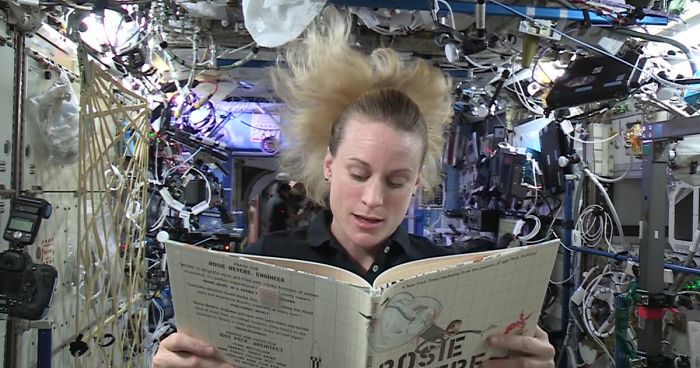
November 12th 2021 - Possible Venusian evolutionary histories and connections to present day observables
Speaker: Dr. Michael Way
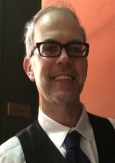
Mike is a physical scientist at The NASA Goddard Institute for Space Studies in New York City, and a sometimes visiting professor in the Department of Physics & Astronomy at Uppsala University in Sweden. He was awarded his Physics PhD in Observational Cosmology in 1998 from UM St.Louis, and has also worked in Machine Learning, the history of Astronomy , and in recent years the modeling of planetary atmospheres using a three dimensional general circulation model known as ROCKE-3D. His most recently published work attempts to reconstruct Venus' climate history over its 4.5 billion year lifespan. See this recent piece in Scientific American. Mike also enjoys road biking, reading, MotoGP, and spending time with his family.
Mike is a physical scientist at The NASA Goddard Institute for Space Studies in New York City, and a sometimes visiting professor in the Department of Physics & Astronomy at Uppsala University in Sweden. He was awarded his Physics PhD in Observational Cosmology in 1998 from UM St.Louis, and has also worked in Machine Learning, the history of Astronomy , and in recent years the modeling of planetary atmospheres using a three dimensional general circulation model known as ROCKE-3D. His most recently published work attempts to reconstruct Venus' climate history over its 4.5 billion year lifespan. See this recent piece in Scientific American. Mike also enjoys road biking, reading, MotoGP, and spending time with his family.
Register in advance for this webinar:
https://westernuniversity.zoom.us/webinar/register/WN_don9DfbdRiepr51mZq8JNQ
November 19th 2021 - Astronauts Wanted!
Speaker: Dr. Adam Sirek
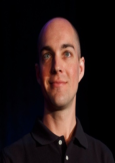 Captain Adam Sirek, MD, MSc, CCFP, DABFM, FAsMA, FAAFP is a co-founder of Leap Biosystems, specializing in Family Medicine, Aerospace Medicine, Occupational Medicine and Medical Education.
Captain Adam Sirek, MD, MSc, CCFP, DABFM, FAsMA, FAAFP is a co-founder of Leap Biosystems, specializing in Family Medicine, Aerospace Medicine, Occupational Medicine and Medical Education.
Dr. Sirek is a Fellow of the Aerospace Medical Association and a Fellow of the American Academy of Family Physicians. He holds a Doctorate in Medicine from St. George’s University as well as an Honours Bachelor’s Degree and a Master’s Degree in Human Biology and Physiology from the University of Toronto. During medical school, Dr. Sirek concurrently attended Northumbria University and received a Diploma in Higher Education (Medical Sciences). He completed his residency including a year as chief resident at St. John Hospital and Medical Center in Detroit, Michigan. Dr. Sirek maintains unrestricted medical licenses in Ontario, Michigan and Texas.
Dr. Sirek is active in the training and development of young professionals in both the medical and aerospace communities of Canada. He is a reservist with the Canadian Armed Forces, serving as a pilot and operations officer in support of the Air Cadet Flying Program. He is also a faculty member at the Schulich School of Medicine and Dentistry, Western University, where he teaches and mentors medical students and residents. Dr. Sirek also holds a faculty position at Western University’s Institute for Earth and Space Exploration. He is also a licensed pilot and SCUBA diver.
Dr. Sirek’s research interests include the Space Flight-Associated Neuro-Occular Syndrome (SANS), and has published a study involving on-orbit ultrasound diagnostics from the International Space Station (a link to this publication below).
Dr. Sirek was a top 17 finalist in the 2016-2017 Canadian Space Agency Astronaut Recruitment Campaign, a process that started with 3772 applicants for 2 astronaut positions that were filled during the summer of 2017.
Register in advance for this webinar:
https://westernuniversity.zoom.us/webinar/register/WN_VnXwW7V5RY2yjnPQg1nJPg
December 3rd 2021 - The Earth System and Outer Space Law
Speaker: Dr. Elena Cirkovic
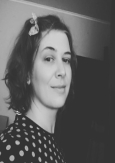
Dr Elena Cirkovic is a transdisciplinary legal scholar presently researching the broader topic of Anthropocentrism and Sustainability of the Earth System and Outer Space. Her work focuses on connecting the Earth System (s) and outer space environment (s). The project identifies planetary and interplanetary environmental challenges: a. climate change and b. environmental problems in outer space (e.g. orbital debris or interplanetary contamination).
Apart from her research, Elena has taught various aspects of international law, aboriginal law in Canada, refugee and migration law, transnational law, and global governance for over ten years. She has taught and supervised undergraduate and graduate students, in addition to giving public lectures on the topic. This week Dr. Cirkovic will be educating attendees on her work on Indigenous law as applies to space and the Arctic.
Register in advance for this webinar:
https://westernuniversity.zoom.us/webinar/register/WN_y1cpwIV6TWGlRNeTT-4HrQ
2020-2021 Western Space Weekly Webinar Schedule
September 18th 2020 - Welcome back Western Space!

Speakers: Dr. Gordon Osinski, Dr. Jan Cami, Dr. Jayshri Sabrinathan, Dr. Parshati Patel, And Courtney Barrett provide updates on what the Istitute has been up to over the summer and were we are headed
Register in advance for this webinar:
https://westernuniversity.zoom.us/webinar/register/WN_ed6i9G7FTV29RxmQW6OWbg
September 25th 2020 - Science Communication and Space
Speaker: Niamh Shaw
 Dr. Niamh Shaw is passionate about people and curiosity, and all things space and is delighted. An Irish polymath with 2 degrees in engineering, a PhD in science and almost 20 years of performance & writing experience, she has been providing events for the general public since 2014. On a mission to be writer-in-residence at the International Space Station, Niamh wants to connect with a wider global community using space stories to highlight sustainability issues and responsible behaviour as Earth citizens. A recent graduate of practical science communication at Cambridge University, Niamh was awarded 'Outstanding contributions to STEM Communications' by Science Foundation Ireland in 2018. In response to the COVID pandemic, she recently launched a new podcast series 'Humans of Space' on Spotify and Apple Podcast, a relaxed and warm chat with guests from the space sector every week to highlight the interdisciplinary and international message of space. As keynote speaker she has spoken at prominent events including the Irish President's residence (Áras an Uachtaráin) on International Women's Day 2019, the Department of Foreign Affairs Dublin on St Brigids Day 2020, WIRED Live UK, NASA Johnson Space Centre (USA), TEDxUCD and New Scientist (UK) and has appeared on 'The Late Late Show' and 'The Tommy Tiernan Show' on Irish television. Her first book 'Dream Big- an Irishwoman's Space Odyssey' from Mercier Press was published in March 2020 and she writes regularly for BBC’s Sky at Night magazine. Whenever the pandemic is pushed back, Niamh plans to resume work on her project 'Walking Slowly to Space', a global walking project to meet & chat with diverse communities, & share & exchange ideas about science & space. A key part of her quest to get to space is to connect with as many people as possible & she will not stop until she has shared the wider message of a safer, healthier & fairer planet for all.
Dr. Niamh Shaw is passionate about people and curiosity, and all things space and is delighted. An Irish polymath with 2 degrees in engineering, a PhD in science and almost 20 years of performance & writing experience, she has been providing events for the general public since 2014. On a mission to be writer-in-residence at the International Space Station, Niamh wants to connect with a wider global community using space stories to highlight sustainability issues and responsible behaviour as Earth citizens. A recent graduate of practical science communication at Cambridge University, Niamh was awarded 'Outstanding contributions to STEM Communications' by Science Foundation Ireland in 2018. In response to the COVID pandemic, she recently launched a new podcast series 'Humans of Space' on Spotify and Apple Podcast, a relaxed and warm chat with guests from the space sector every week to highlight the interdisciplinary and international message of space. As keynote speaker she has spoken at prominent events including the Irish President's residence (Áras an Uachtaráin) on International Women's Day 2019, the Department of Foreign Affairs Dublin on St Brigids Day 2020, WIRED Live UK, NASA Johnson Space Centre (USA), TEDxUCD and New Scientist (UK) and has appeared on 'The Late Late Show' and 'The Tommy Tiernan Show' on Irish television. Her first book 'Dream Big- an Irishwoman's Space Odyssey' from Mercier Press was published in March 2020 and she writes regularly for BBC’s Sky at Night magazine. Whenever the pandemic is pushed back, Niamh plans to resume work on her project 'Walking Slowly to Space', a global walking project to meet & chat with diverse communities, & share & exchange ideas about science & space. A key part of her quest to get to space is to connect with as many people as possible & she will not stop until she has shared the wider message of a safer, healthier & fairer planet for all.
Register in advance for this webinar:
https://westernuniversity.zoom.us/webinar/register/WN_mUScqjsxQvSDswqp3AK8qw
October 2nd 2020 - Gotta Go: The life and times of the fastest stars in the Milky Way
Speaker: Fraser Evans
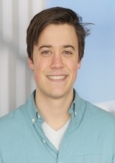 Over the last 15 years, the astronomical community has discovered with increasing frequency stars in our Milky Way galaxy which are travelling at extremely high velocities, up to and exceeding 1000 km/s in the Galactic rest frame. These velocities are high enough such that these stars will eventually escape the Milky Way entirely, leaving us behind as they fly off into intergalactic space. The interest in these objects is two-fold. First, they flag the extreme astrophysical processes capable of accelerating them to such insane speeds, so they can offer insight into the dynamics of stars around supermassive black holes, the physics governing supernova explosions, the nature of dense star clusters, and perhaps even more bizarre phenomena. Second, their ability to travel extreme distances in their lifetimes make them a useful tracer for mapping out the gravitational potential of the Milky Way and our close neighbours. In this talk, I will review the history and current state of fast star research and discuss my own contributions to the field.
Over the last 15 years, the astronomical community has discovered with increasing frequency stars in our Milky Way galaxy which are travelling at extremely high velocities, up to and exceeding 1000 km/s in the Galactic rest frame. These velocities are high enough such that these stars will eventually escape the Milky Way entirely, leaving us behind as they fly off into intergalactic space. The interest in these objects is two-fold. First, they flag the extreme astrophysical processes capable of accelerating them to such insane speeds, so they can offer insight into the dynamics of stars around supermassive black holes, the physics governing supernova explosions, the nature of dense star clusters, and perhaps even more bizarre phenomena. Second, their ability to travel extreme distances in their lifetimes make them a useful tracer for mapping out the gravitational potential of the Milky Way and our close neighbours. In this talk, I will review the history and current state of fast star research and discuss my own contributions to the field.
Fraser was born and raised in tiny Blind River, Ontario. He did his undergraduate degree at McMaster University, and stuck around to do his MSc studying galaxy evolution under Dr. Laura Parker. After a brief stint as teaching faculty at McMaster, he hopped across the Atlantic to begin his PhD doing theoretical modeling of fast stars at Leiden Observatory in the Netherlands, where he has just entered his third year.
Register in advance for this webinar:
https://westernuniversity.zoom.us/webinar/register/WN_YouIHshORFe8lFUBFQ2pUg
October 9th 2020 - Thanksgiving long weekend - No Forum

The Institute for for Earth and Space Exporation wishes everyone a safe and healthy thanksgiving long weekend!
October 16th 2020 - Finding Your Non-Linear Career Path in Space
Speaker: Tanya Harrison
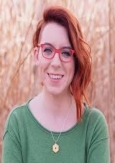 Dr. Tanya Harrison calls herself a “Professional Martian.” She has spent the last decade working as a scientist and in mission operations on multiple NASA Mars missions, including the Curiosity and Opportunity rovers. Her specialty lies in geomorphology: the study of a planet’s evolution based on its surface features. Before Mars however, Tanya had her head in the stars as an astronomer studying the metal content of star clusters and recurring novae systems. She holds a Ph.D. in Geology from the University of Western Ontario, a Masters in Earth and Environmental Sciences from Wesleyan University, and a B.Sc. in Astronomy and Physics from the University of Washington. Currently she is the Director of Research for Arizona State University’s Space Technology and Science (“NewSpace”) Initiative. Tanya is also an advocate for advancing the status of women in science and for accessibility in the geosciences. You can find her prolifically tweeting about the Red Planet—and her experiences with both #WomenInSTEM and #DisabledInSTEM—as @tanyaofmars.
Dr. Tanya Harrison calls herself a “Professional Martian.” She has spent the last decade working as a scientist and in mission operations on multiple NASA Mars missions, including the Curiosity and Opportunity rovers. Her specialty lies in geomorphology: the study of a planet’s evolution based on its surface features. Before Mars however, Tanya had her head in the stars as an astronomer studying the metal content of star clusters and recurring novae systems. She holds a Ph.D. in Geology from the University of Western Ontario, a Masters in Earth and Environmental Sciences from Wesleyan University, and a B.Sc. in Astronomy and Physics from the University of Washington. Currently she is the Director of Research for Arizona State University’s Space Technology and Science (“NewSpace”) Initiative. Tanya is also an advocate for advancing the status of women in science and for accessibility in the geosciences. You can find her prolifically tweeting about the Red Planet—and her experiences with both #WomenInSTEM and #DisabledInSTEM—as @tanyaofmars.
Register in advance for this webinar:
https://westernuniversity.zoom.us/webinar/register/WN_hTp2aa8AQYyNqHf522TfDw
October 23rd 2020 - Characterizing an Ancient River Delta at Jezero Crater, Mars
Speaker: Dr. Tim Goudge

Dr. Tim Goudge is an Assistant Professor in the Department of Geological Sciences within the Jackson School of Geosciences at the University of Texas at Austin. Dr. Goudge’s research focuses on the use of remote sensing data to study the signature of surface processes recorded in the topography, mineralogy, and sedimentary rock record of Mars, Earth, and other planetary bodies. Prior to UT, Dr. Goudge received a BSc in geological engineering from Queen’s University, and a ScM and PhD from Brown University
Register in advance for this webinar:
https://westernuniversity.zoom.us/webinar/register/WN_O-Db9LcYR3O9DdV38-8anA
October 30th 2020 - What's blowing on the solar wind, and its impacts on Earth and human endeavours.
Speaker: Scott Sutherland
 After earning a BSc in Physical Sciences from the University of Guelph and a Certificate in Meteorology from York University, Scott spent over 10 years working in the field of meteorology - as an air quality scientist for the Ontario Ministry of the Environment, an operational weather forecaster for The Weather Network, and an air quality meteorologist for Georgia's Environmental Protection Division. Beginning in 2012, Scott embarked on a new career as a science writer and science communicator. Founding the Geekquinox blog on Yahoo Canada, he began writing about all aspects of scientific research, from molecules to multiverses. Returning to The Weather Network in 2014, he brought his passion for science communication to the company's online news team. In addition to communicating the science of weather and climate change, Scott is the Weather Network's go-to source for news about space and space exploration. One of Scott's favourite topics, which combines a number of his interests, is Space Weather. From the awe-inspiring to the potentially dangerous, the varied impacts of our active Sun - on space operations, on Earth's magnetic field, and in the upper atmosphere - form a fascinating field of research. Additionally, efforts to forecast those impacts are still in their fledgling state, en par with where weather forecasting was a few decades ago. With new insights streaming in from solar space missions, this should be a promising field of research in the years to come
After earning a BSc in Physical Sciences from the University of Guelph and a Certificate in Meteorology from York University, Scott spent over 10 years working in the field of meteorology - as an air quality scientist for the Ontario Ministry of the Environment, an operational weather forecaster for The Weather Network, and an air quality meteorologist for Georgia's Environmental Protection Division. Beginning in 2012, Scott embarked on a new career as a science writer and science communicator. Founding the Geekquinox blog on Yahoo Canada, he began writing about all aspects of scientific research, from molecules to multiverses. Returning to The Weather Network in 2014, he brought his passion for science communication to the company's online news team. In addition to communicating the science of weather and climate change, Scott is the Weather Network's go-to source for news about space and space exploration. One of Scott's favourite topics, which combines a number of his interests, is Space Weather. From the awe-inspiring to the potentially dangerous, the varied impacts of our active Sun - on space operations, on Earth's magnetic field, and in the upper atmosphere - form a fascinating field of research. Additionally, efforts to forecast those impacts are still in their fledgling state, en par with where weather forecasting was a few decades ago. With new insights streaming in from solar space missions, this should be a promising field of research in the years to come
Register in advance for this webinar:
https://westernuniversity.zoom.us/webinar/register/WN_nMSXVk8nRvWX6dE-pCySWw
November 6th 2020 - Fall Reading week No Forum

November 13th 2020 - The MILO Space Science Institute: A New Model for Deep Space Exploration
Speaker: Dr. Jim Bell
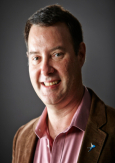 The MILO Space Science Institute is a non-profit collaboration among Arizona State University, Lockheed Martin, and GEOShare. MILO was formed in 2018 to test the hypothesis that science-driven deep space robotic missions could also be organized, conducted, and led by consortia of U.S. and international member organizations, rather than only by the world's largest space agencies. Initial MILO activity has been focused on design and development of three inaugural mission concepts that could achieve Decadal-Survey quality science, be conducted relatively quickly as a proof-of-concept of the hypothesis, and be relatively affordable –at a total cost per member up to an order of magnitude or more below the cost that it would cost them to conduct the mission on their own. In this presentation I will describe the MILO concept and “origin story”, the inaugural missions that the Institute is actively pitching to potential members worldwide, and progress to date on specific agreements and plans being formulated with member organizations (including Western University!).
The MILO Space Science Institute is a non-profit collaboration among Arizona State University, Lockheed Martin, and GEOShare. MILO was formed in 2018 to test the hypothesis that science-driven deep space robotic missions could also be organized, conducted, and led by consortia of U.S. and international member organizations, rather than only by the world's largest space agencies. Initial MILO activity has been focused on design and development of three inaugural mission concepts that could achieve Decadal-Survey quality science, be conducted relatively quickly as a proof-of-concept of the hypothesis, and be relatively affordable –at a total cost per member up to an order of magnitude or more below the cost that it would cost them to conduct the mission on their own. In this presentation I will describe the MILO concept and “origin story”, the inaugural missions that the Institute is actively pitching to potential members worldwide, and progress to date on specific agreements and plans being formulated with member organizations (including Western University!).
Jim Bell is a professor in the School of Earth & Space Exploration at Arizona State University, where he teaches courses in astronomy, geology, planetary science, and commercial space. He is an active astronomer and planetary scientist who has been involved in solar system exploration using the Hubble Space Telescope, Mars rovers, and orbiters sent to Mars, the Moon, and several asteroids. His research focuses on the use of remote sensing imaging and spectroscopy to assess the geology, composition, and mineralogy of the surfaces of planets, moons, asteroids, and comets. He is also the author of many popular science books related to space exploration, and is the Chief Scientist of the MILO Space Science Institute, a non-profit collaboration between ASU, Lockheed Martin, and Geoshare dedicated to increasing access and opportunities for deep space planetary science missions for member organizations around the world.
Register in advance for this webinar:https://westernuniversity.zoom.us/webinar/register/WN_9g524amdQRWjI-52kC4VAA
November 20th 2020 - STRATOS Program Overview and Opportunities
Speaker: Phillipe Vincent
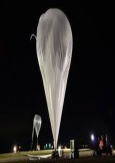 Philippe Vincent began his career as a Mechanical Engineer in the aeronautics sector. While working for Pratt and Whitney Canada, he was responsible of developing dual sources for turboprop engine components such bearings and castings. He was also an ACE quality system champion. Mr. Vincent joined the CSA in 2005. He contributed to satellite and ISS projects, in partnership with ESA and JAXA, before being assigned to the Terrestrial Rover Prototypes support (2010) and the Canadian High-Altitude balloons program (STRATOS) (2012). In collaboration with the French Centre national d’études spatiales (CNES), Philippe held the position of Payload Integration Manager during several balloon flight campaigns in Canada, Sweden and Australia. Recently, Mr. Vincent has been appointed as the new Mission Manager for STRATOS. Part of his mandate will be to renew the collaboration agreement with CNES, ending in 2022, and manage the future flight campaigns. Philippe holds a B. Eng. In Mechanical Engineering from the École de technologie supérieure, Montréal, Québec.
Philippe Vincent began his career as a Mechanical Engineer in the aeronautics sector. While working for Pratt and Whitney Canada, he was responsible of developing dual sources for turboprop engine components such bearings and castings. He was also an ACE quality system champion. Mr. Vincent joined the CSA in 2005. He contributed to satellite and ISS projects, in partnership with ESA and JAXA, before being assigned to the Terrestrial Rover Prototypes support (2010) and the Canadian High-Altitude balloons program (STRATOS) (2012). In collaboration with the French Centre national d’études spatiales (CNES), Philippe held the position of Payload Integration Manager during several balloon flight campaigns in Canada, Sweden and Australia. Recently, Mr. Vincent has been appointed as the new Mission Manager for STRATOS. Part of his mandate will be to renew the collaboration agreement with CNES, ending in 2022, and manage the future flight campaigns. Philippe holds a B. Eng. In Mechanical Engineering from the École de technologie supérieure, Montréal, Québec.
Register in advance for this webinar:
https://westernuniversity.zoom.us/webinar/register/WN_tHpqGcPVQlmR9C8NVptbIw
November 27th 2020 - Biodosimetry for diagnosing and treating accidental radiation exposure (in space)
Speaker: Dr. Peter Rogan
 Dr. Peter Rogan is the Director of the Laboratory of Genome Bioinformatics, Professor in Biochemistry at the University of Western Ontario, Schulich School of Medicine, and Faculty member of Western Space. Dr. Rogan is a molecular biologist with a strong record of accomplishments in human genetics and computational molecular biology. He has made significant contributions to the study of genotype-phenotype relationships in a variety of inherited and imprinted disorders, and, together with Dr. Thomas Schneider, proposed and applied the concept of information analysis to the systematic analysis of human mutations. Dr. Rogan has established an independent and continuous record of accomplishments in several areas including computational biology, image processing of molecular biological data, genetic database construction, linkage analysis, molecular evolution, and cytogenomics.
Dr. Peter Rogan is the Director of the Laboratory of Genome Bioinformatics, Professor in Biochemistry at the University of Western Ontario, Schulich School of Medicine, and Faculty member of Western Space. Dr. Rogan is a molecular biologist with a strong record of accomplishments in human genetics and computational molecular biology. He has made significant contributions to the study of genotype-phenotype relationships in a variety of inherited and imprinted disorders, and, together with Dr. Thomas Schneider, proposed and applied the concept of information analysis to the systematic analysis of human mutations. Dr. Rogan has established an independent and continuous record of accomplishments in several areas including computational biology, image processing of molecular biological data, genetic database construction, linkage analysis, molecular evolution, and cytogenomics.
Register in advance for this webinar:
https://westernuniversity.zoom.us/webinar/register/WN_5EeLsmmOQkK3RmNKYGQVNg
December 4th 2020 - Fast radio bursts: What they are, why we care
Speaker: Daniele Michilli
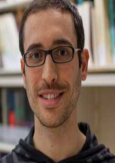 Fast radio bursts are enigmatic radio signals of millisecond duration coming from other galaxies. The source distances imply huge luminosities and prevented us from having a clear idea of their origin. New instruments designed to detect fast radio bursts, such as CHIME/FRB, have made outstanding discoveries in the last months that advanced our understanding of these mysterious sources. Among them, particularly interesting are an exceptionally bright signal from a galactic magnetar and a periodicity in the activity of a repeating fast radio burst source. Independently on their origin, however, fast radio bursts can be used as cosmological probes by measuring the effects caused by free electrons along the line of sight on their signal. Precise localization is needed to pursue this goal and telescopes such as ASKAP are providing groundbreaking results, for example measuring the baryon content of the low-redshift intergalactic medium. Facilities under construction, such as CHIME/Outriggers, promise to revolutionize the field in the upcoming years and provide us with a new tool to study the evolution of the Universe.
Fast radio bursts are enigmatic radio signals of millisecond duration coming from other galaxies. The source distances imply huge luminosities and prevented us from having a clear idea of their origin. New instruments designed to detect fast radio bursts, such as CHIME/FRB, have made outstanding discoveries in the last months that advanced our understanding of these mysterious sources. Among them, particularly interesting are an exceptionally bright signal from a galactic magnetar and a periodicity in the activity of a repeating fast radio burst source. Independently on their origin, however, fast radio bursts can be used as cosmological probes by measuring the effects caused by free electrons along the line of sight on their signal. Precise localization is needed to pursue this goal and telescopes such as ASKAP are providing groundbreaking results, for example measuring the baryon content of the low-redshift intergalactic medium. Facilities under construction, such as CHIME/Outriggers, promise to revolutionize the field in the upcoming years and provide us with a new tool to study the evolution of the Universe.
Register in advance for this webinar:
https://westernuniversity.zoom.us/webinar/register/WN_hPTNxZfqQIiRTYo7LFqF2A
December 11th 2020 - Lunar Flashlight
Speaker: Barb Cohen
 Lunar Flashlight is an innovative, small NASA mission to be launched as a secondary payload on the first Space Launch System, Artemis-1. This highly mass- and volume-constrained satellite will demonstrate several technologies for NASA, including the use of “green” propellant, the ability for a CubeSat-sized satellite to perform science measurements beyond low Earth orbit, and the first planetary mission to use multi-band active reflectometry from orbit. Lunar Flashlight will detect and map water ice in permanently shadowed regions of the lunar south pole by measuring surface reflectance at multiple wavelengths. Mapping and quantifying lunar water ice addresses one of NASA’s Strategic Knowledge Gaps to understand the lunar resource potential for future human exploration of the Moon. Dr. Barbara Cohen is the Principal Investigator for the Lunar Flashlight mission, leading the science team.
Lunar Flashlight is an innovative, small NASA mission to be launched as a secondary payload on the first Space Launch System, Artemis-1. This highly mass- and volume-constrained satellite will demonstrate several technologies for NASA, including the use of “green” propellant, the ability for a CubeSat-sized satellite to perform science measurements beyond low Earth orbit, and the first planetary mission to use multi-band active reflectometry from orbit. Lunar Flashlight will detect and map water ice in permanently shadowed regions of the lunar south pole by measuring surface reflectance at multiple wavelengths. Mapping and quantifying lunar water ice addresses one of NASA’s Strategic Knowledge Gaps to understand the lunar resource potential for future human exploration of the Moon. Dr. Barbara Cohen is the Principal Investigator for the Lunar Flashlight mission, leading the science team.
Dr. Cohen is a planetary scientist at NASA’s Goddard Space Flight Center interested in the geochronology and geochemistry of the Moon, Mars and asteroids. She is a member of the science teams for the Mars rovers Curiosity and Perseverance, the PI for a mass spectrometer manifested on the Astrobotic Peregrine lunar lander, and is developing a flight version of her noble-gas geochronology technique, the Potassium-Argon Laser Experiment (KArLE), for use on future planetary landers and rovers. She most recently served as co-chair for the Artemis III Science Definition Team.
Register in advance for this webinar:
https://westernuniversity.zoom.us/webinar/register/WN_tyMlvgtgQMSXgPwMSXL3GA
HAPPY HOLIDAYS!
January 8th 2021 - Mapping Matter in Strong Gravity: Spectral-Timing of Black Holes and Neutron Stars
Speaker: Dr. Abbie Stevens
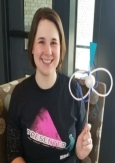 Abstract:
Abstract:
One of the best laboratories to study strong-field gravity is the inner 100s of kilometers around black holes and neutron stars in binary systems with low-mass stars like our Sun. The X-ray light curves of these systems show variability on timescales from milliseconds to months — the rapid variability can appear as quasi-periodic oscillations (QPOs), which may be produced by general relativistic effects. My research looks at QPOs from black holes and neutron stars by applying state-of-the-art “spectral-timing” techniques to constrain the physical origin of these signals. In this talk, I will discuss data from NICER, an X-ray telescope attached to the International Space Station. I will also highlight the important role of open-source scientific software in astronomy research.
Bio:
Dr. Abbie Stevens is an NSF Astronomy & Astrophysics Postdoctoral Fellow at Michigan State University and the University of Michigan. She completed her MSc at the University of Alberta in Canada and her PhD at the University of Amsterdam in the Netherlands. Abbie researches variable emission from accreting black holes and neutron stars in X-ray binaries, to study physical processes in strong gravity. She is also involved in open-source scientific research software, a Steering Committee member for STROBE-X (a proposed NASA mission), an Affiliated Scientist with NICER (a soft X-ray telescope on the International Space Station), and an advocate for mental wellbeing in academia.
Register in advance for this webinar:
https://westernuniversity.zoom.us/webinar/register/WN_7RooB1ENRoibOxEJVghHwA
January 15th 2021: Space Exploration and the Search for Entrepreneurial Opportunity
Speaker: Larry Plummer
 Abstract:
Abstract:
Entrepreneur Magazine recently proclaimed that a group of ‘rock star’ entrepreneurs were ‘driving the commoditization and monetization of space.’ While this may be true for the technologies we use to get to space (e.g., SpaceX, Blue Origin), there are myriad entrepreneurial opportunities to be found in various activities once we get there. To this end, this session will focus less on space transportation venturing and more on opportunities in lesser-known areas like space weather forecasting, orbital debris mitigation, planetary resources, and more.
Bio:
Larry Plummer is an Associate Professor in Entrepreneurship. He earned a Ph.D. in strategy and entrepreneurship at the University of Colorado at Boulder. Before joining Ivey in 2014, Larry was an assistant professor of management and entrepreneurship at the University of Oklahoma's Price College of Business and a past Fellow of the Max Planck Institute for Economics. His experience as an entrepreneur includes ventures connected to space weather forecasting, precision agriculture, and satellite communication. Prior to his academic career, Larry directed the “Space Business Initiative” for the American Institute of Aeronautics and Astronautics (AIAA) and, perhaps most proudly, was a volunteer Docent at the Smithsonian’s National Air and Space Museum for nearly a decade. Larry’s research focuses mainly on regional entrepreneurial dynamics using economic geography frameworks and spatial data.
Register in advance for this webinar:
https://westernuniversity.zoom.us/webinar/register/WN__v01uCw_Svqs_6hmTe-Uuw
January 22nd 2021: Radiation Voyage to Mars: Should we stay or should we go?
Speaker: Dr. Jerry Battista
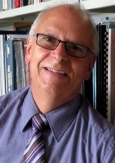 Dr. Battista obtained his Ph.D. degree in Medical Biophysics at the University of Toronto in 1977 and then trained in clinical physics at Princess Margaret Hospital. He relocated to the Cross Cancer Institute and University of Alberta in 1979. His team developed one of the first “3D” systems for modelling radiation treatments of cancer patients. Starting in 1988, he directed Physics Research at the London Regional Cancer Program and later served as Chair of Medical Biophysics. He has published over 130 peer-reviewed articles and authored major research grants, some in collaboration with industry. He has a special interest in space exploration with a focus on radiation hazards. Jerry is an award-winning educator at Western (Pleva Award) known for his clear enthusiastic style. Recently, he has turned his attention to developing small-scale CT imaging systems for education. He has also produced YouTube videos to teach MRI with a guitar ! He received the Kirkby Award from the Canadian Association of Physicists (CAP) and Gold Medal from the Canadian Organization of Medical Physicists (COMP) for lifetime achievements.
Dr. Battista obtained his Ph.D. degree in Medical Biophysics at the University of Toronto in 1977 and then trained in clinical physics at Princess Margaret Hospital. He relocated to the Cross Cancer Institute and University of Alberta in 1979. His team developed one of the first “3D” systems for modelling radiation treatments of cancer patients. Starting in 1988, he directed Physics Research at the London Regional Cancer Program and later served as Chair of Medical Biophysics. He has published over 130 peer-reviewed articles and authored major research grants, some in collaboration with industry. He has a special interest in space exploration with a focus on radiation hazards. Jerry is an award-winning educator at Western (Pleva Award) known for his clear enthusiastic style. Recently, he has turned his attention to developing small-scale CT imaging systems for education. He has also produced YouTube videos to teach MRI with a guitar ! He received the Kirkby Award from the Canadian Association of Physicists (CAP) and Gold Medal from the Canadian Organization of Medical Physicists (COMP) for lifetime achievements.
Register in advance for this webinar:
https://westernuniversity.zoom.us/webinar/register/WN_CBPd9LgVQYOanu51ePgNcQ
January 29th 2021: Gravitational Waves
Speaker: Corey Gray
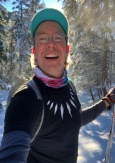 Corey Gray is Scottish & Blackfoot and a member of the Siksika Nation of Alberta. He grew up in southern California and received Bachelor of Science degrees in Physics and Applied Mathematics from Humboldt State University (HSU). After undergrad, he was hired as a Detector Operator by Caltech in 1998 to work for the astronomy project, LIGO (Laser Interferometer Gravitational wave Observatory) in Washington State. At LIGO, Corey worked on teams to both build and operate gravitational wave detectors. The LIGO Scientific Collaboration (LSC) made historic news in 2016 by announcing the first direct detection of gravitational waves, which helps prove a prediction made 100 years earlier by Albert Einstein!
Corey Gray is Scottish & Blackfoot and a member of the Siksika Nation of Alberta. He grew up in southern California and received Bachelor of Science degrees in Physics and Applied Mathematics from Humboldt State University (HSU). After undergrad, he was hired as a Detector Operator by Caltech in 1998 to work for the astronomy project, LIGO (Laser Interferometer Gravitational wave Observatory) in Washington State. At LIGO, Corey worked on teams to both build and operate gravitational wave detectors. The LIGO Scientific Collaboration (LSC) made historic news in 2016 by announcing the first direct detection of gravitational waves, which helps prove a prediction made 100 years earlier by Albert Einstein!
Register in advance for this webinar: https://westernuniversity.zoom.us/webinar/register/WN_1NfWdjx0RhmX5QhA5J9_vw
February 5th 2021: Teaching Astronomy Concepts using Stellarium and Mobile Apps
Speaker: Chris Vaughan
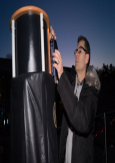 Chris Vaughan aka “AstroGeoGuy” is an Astronomer and Earth Scientist. Since 1996, Chris has been delivering planetarium experiences, visiting classrooms, hosting science-themed assemblies, running science clubs, and holding stargazing parties for schools and other groups in southern Ontario. He is the author of a weekly astronomy blog for non-astronomers called Astronomy Skylights, which is widely read by subscribers worldwide. Chris has written stories for SkyNews, Canada’s astronomy magazine. For the website Space.com, he writes a monthly calendar of astro-events, and many columns focused on Mobile Astronomy Apps. Chris’ content is used in the popular SkySafari 6 and Star Walk 2 smartphone apps and the Starry Night software package.
Chris Vaughan aka “AstroGeoGuy” is an Astronomer and Earth Scientist. Since 1996, Chris has been delivering planetarium experiences, visiting classrooms, hosting science-themed assemblies, running science clubs, and holding stargazing parties for schools and other groups in southern Ontario. He is the author of a weekly astronomy blog for non-astronomers called Astronomy Skylights, which is widely read by subscribers worldwide. Chris has written stories for SkyNews, Canada’s astronomy magazine. For the website Space.com, he writes a monthly calendar of astro-events, and many columns focused on Mobile Astronomy Apps. Chris’ content is used in the popular SkySafari 6 and Star Walk 2 smartphone apps and the Starry Night software package.
Chris is an operator and tour guide for the David Dunlap Observatory’s 74″ (1.88 m) Great Telescope, presenter in their Skylab room, and a speaker at their public programs. He also presents The Sky This Month at the monthly Recreational Astronomy Night meetings of the Royal Astronomical Society of Canada Toronto Centre, and is an instructor in their public astronomy course. Chris is the recipient of the 2014 Bertram Topham Award for Observing, the 2013, 2014 and 2018 Andrew Elvins Awards for Promotion of Astronomy, and the 2019 Ostrander Ramsey Award for Astronomical Writing from the RASC. In 2018, Chris was awarded the Reach for the Stars Award from the City of Markham, in recognition of his promotion of astronomy and fight against light pollution in Thornhill. A lifelong learner, Chris has been learning to speak, read, and write Mandarin.
February 12th 2021: Dragonfly
Speaker: Shannon Mackenzie
 Insights into the surface of Titan from Cassini VIMS: Why send Dragonfly to the Dunes?”
Insights into the surface of Titan from Cassini VIMS: Why send Dragonfly to the Dunes?”
Register in advance for this webinar:
https://westernuniversity.zoom.us/webinar/register/WN_cG6dVRuUT3Cclww9885EjQ
February 19th 2021: READING WEEK! - No webinar this week
February 26th 2021: What on earth is space law?
Speaker: Kiran Vazhapully -CANCELLED
 ** Unfortunately this talk has been cancelled
** Unfortunately this talk has been cancelled
Kiran Mohan Vazhapully is a Legal Officer at the Secretariat of Asian-African Legal Consultative Organization (AALCO), an intergovernmental organization based in New Delhi. Currently, he is on leave specializing in air and space law (LL.M) at McGill University, Canada, where he is an Erin J.C. Arsenault Graduate Fellow. He holds an integrated bachelor's degree in law (BA LLB Hons.) from the National University of Juridical Sciences (WBNUJS, Kolkata) and master's degree in international law from the University of Kerala. He is a recipient of several academic recognitions, including the Hague Academy Scholarship, UN Fellowship to attend the prestigious International Law Seminar held annually in Geneva, and the Reserve Bank of India Young Scholar Award. He has published in many national and international law journals and presented his research in several international fora.
March 5th 2021: Planets Big and Small
Speaker: Dr. Eve Lee
 The discovery of thousands of exoplanets revealed a huge diversity in the sizes, masses, and orbital characteristics of planets outside of our solar system. How can we understand the origin of such diversity? We tackle this question by asking what limited the growth of some gas-accreting planets and what stalled their migration, both of which depend sensitively on when the planetary cores assemble and how massive they are. I will describe how the theories of gas accretion and planet-disk interaction can be combined with the measured distributions of radii and orbital periods to reveal the assembly history and masses of exoplanetary cores from sub-Earths to sub-Saturns, and potentially gas giants.
The discovery of thousands of exoplanets revealed a huge diversity in the sizes, masses, and orbital characteristics of planets outside of our solar system. How can we understand the origin of such diversity? We tackle this question by asking what limited the growth of some gas-accreting planets and what stalled their migration, both of which depend sensitively on when the planetary cores assemble and how massive they are. I will describe how the theories of gas accretion and planet-disk interaction can be combined with the measured distributions of radii and orbital periods to reveal the assembly history and masses of exoplanetary cores from sub-Earths to sub-Saturns, and potentially gas giants.
Register in advance for this webinar:
https://westernuniversity.zoom.us/webinar/register/WN_H11cZLMbRXae5wF3q4Z1gg
March 12th 2021: Psychology and Space
Speaker: Julia McMenamin
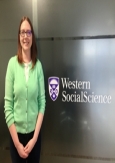 Julia McMenamin is a PhD Candidate in Industrial Organizational Psychology at Western University. Her research focuses primarily on teams in the workplace, especially those working in high-stakes settings including healthcare, and isolated, confined and extreme conditions. Her goal is to improve performance and safety in the workplace by gaining a better understanding of the errors people make when collaborating with others, and when using automation. Since this research depends a great deal on the use of simulated work environments—from virtual pharmacies to mission control rooms—assessing and improving the psychological fidelity of these simulations is a key component of her work.
Julia McMenamin is a PhD Candidate in Industrial Organizational Psychology at Western University. Her research focuses primarily on teams in the workplace, especially those working in high-stakes settings including healthcare, and isolated, confined and extreme conditions. Her goal is to improve performance and safety in the workplace by gaining a better understanding of the errors people make when collaborating with others, and when using automation. Since this research depends a great deal on the use of simulated work environments—from virtual pharmacies to mission control rooms—assessing and improving the psychological fidelity of these simulations is a key component of her work.
Register in advance for this webinar:
https://westernuniversity.zoom.us/webinar/register/WN_JLVWmI7WTWi21VRHtSPC_A
March 19th 2021: Mining (the Legally Ambiguous) Space
Speaker: Elizabeth Steyn and Valerie Oosterveld
Mining in space is increasingly moving toward reality. Spacefaring nations and entities are interested in mining asteroids and the Moon to support their in-space activities, or to bring rare-earth metals to Earth for the manufacture of electronic devices, electric vehicle batteries and military equipment. Professors Oosterveld and Steyn will discuss the international space law framework, including the Outer Space Treaty, in which such mining will take place and will examine the ambiguities of that framework when applied to the extraction and use of space resources. They will also consider the application of international environmental law applicable to sustainable and responsible mining on Earth in the context of space mining.
Register in advance for this webinar:
https://westernuniversity.zoom.us/webinar/register/WN_eifJSwE_SPCMZpAawd3gBg
March 26th 2021: From SNOLAB to CERN: A Journey Through Space and Time
Speaker: Ben Davis-Purcell
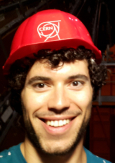 Abstract: SNOLAB is a massive underground particle physics laboratory located near Sudbury, Ontario. TRIUMF is Canada's National Lab for Nuclear & Particle Physics located in Vancouver, BC. Waterloo's Perimeter Institute is one of the most highly-regarded theoretical physics research facilities in the world. CERN is home to the largest particle physics lab in the world, located near Geneva, Switzerland. What is common about all four of these world-class physics research facilities? I have worked at all of them over the past 10 years, they all have a strong Canadian connection, and most importantly for this talk, they all have (potentially lesser known) astroparticle/astronomy programs! In this talk, I will introduce each of these facilities and highlight components of their space-related programs from a personal perspective.
Abstract: SNOLAB is a massive underground particle physics laboratory located near Sudbury, Ontario. TRIUMF is Canada's National Lab for Nuclear & Particle Physics located in Vancouver, BC. Waterloo's Perimeter Institute is one of the most highly-regarded theoretical physics research facilities in the world. CERN is home to the largest particle physics lab in the world, located near Geneva, Switzerland. What is common about all four of these world-class physics research facilities? I have worked at all of them over the past 10 years, they all have a strong Canadian connection, and most importantly for this talk, they all have (potentially lesser known) astroparticle/astronomy programs! In this talk, I will introduce each of these facilities and highlight components of their space-related programs from a personal perspective.
2019-2020 Western Space Weekly Webinar Schedule
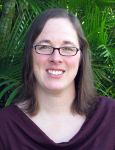 Dr. Catherine Neish February 21 2020 – PAB 100 12:30 – 1:30pm
Dr. Catherine Neish February 21 2020 – PAB 100 12:30 – 1:30pm
Dragonfly: A Rotorcraft Lander at Titan
On June 27, 2019, NASA announced its next New Frontiers mission: Dragonfly. This audacious mission will send a rotorcraft to explore Saturn’s largest moon Titan, and evaluate its potential for prebiotic chemistry and (possibly) extraterrestrial life. The Dragonfly mission will also give us a countless high-resolution views of this strangely Earth-like moon, showing us how rivers and sand dunes form on an icy moon at 94 K. In this presentation, I will provide a summary of the history of the Dragonfly mission, its scientific goals, and the next steps forward, from launch in 2026 to landing in 2034
Dr. McCausland February 28 2020– PAB 100 12:30 – 1:30pm
Tagish Lake meteorite fall and investigation: A unique messenger from the early solar system
In the predawn hour of January 18th, 2000, an exceptionally bright fireball was widely seen traveling southeast across Alaska, Yukon and northernmost B.C. The event itself was spectacular and well-recorded, but 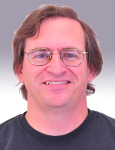 was surpassed during the subsequent days and months by the recovery of unique meteoritic material from the fall; in all some 10 kg of friable carbonaceous chondrite fragments were recovered from the frozen surface of Tagish Lake. Twenty years on, we can now look back on the event and put this Canadian meteorite in research perspective: The Tagish Lake (hydrous C2) carbonaceous chondrite appears to represent a portion of the solar system that has not previously been sampled, and provides a new window on processes active in the early solar system, from beyond the original “snow line.” Amongst recovered meteorite classes, the Tagish Lake meteorite represents perhaps the most porous, primitive material available, with an exceptionally low mean bulk density of 1.64 ± 0.02 g/cm3 and corresponding porosity of 40%! Chondrules within Tagish Lake appear to be undeformed and representative of their original nebular environment. Tagish Lake is also a host for pre-solar grains and pre-solar organic material. More recently, it is considered to be a likely analogue material for the surfaces of C-type near Earth asteroids Bennu and Ryugu, visited by ongoing sample-return missions OSIRIS-REx and Hayabusa-2, respectively. In its unprecedented features, the pristine nature of the still-frozen fragments that were initially collected, and the large amount of material ultimately recovered, the Tagish Lake meteorite is a premiere scientific event, the subject of essential early solar system research for years to come.
was surpassed during the subsequent days and months by the recovery of unique meteoritic material from the fall; in all some 10 kg of friable carbonaceous chondrite fragments were recovered from the frozen surface of Tagish Lake. Twenty years on, we can now look back on the event and put this Canadian meteorite in research perspective: The Tagish Lake (hydrous C2) carbonaceous chondrite appears to represent a portion of the solar system that has not previously been sampled, and provides a new window on processes active in the early solar system, from beyond the original “snow line.” Amongst recovered meteorite classes, the Tagish Lake meteorite represents perhaps the most porous, primitive material available, with an exceptionally low mean bulk density of 1.64 ± 0.02 g/cm3 and corresponding porosity of 40%! Chondrules within Tagish Lake appear to be undeformed and representative of their original nebular environment. Tagish Lake is also a host for pre-solar grains and pre-solar organic material. More recently, it is considered to be a likely analogue material for the surfaces of C-type near Earth asteroids Bennu and Ryugu, visited by ongoing sample-return missions OSIRIS-REx and Hayabusa-2, respectively. In its unprecedented features, the pristine nature of the still-frozen fragments that were initially collected, and the large amount of material ultimately recovered, the Tagish Lake meteorite is a premiere scientific event, the subject of essential early solar system research for years to come.
 Dr. Stan Metchev February 7 2020 – PAB 100 12:30 – 1:30pm
Dr. Stan Metchev February 7 2020 – PAB 100 12:30 – 1:30pm
Shadow swarm: the tiny comets of the outer solar system
Up to a trillion kilometre-sized icy planetesimals reside around and beyond Neptune’s orbit, in a region fo the solar system known as the Kuiper Belt. Only a few thousand of the largest ones are known, typically with sizes of a few hundred kilometres or larger. Not even the next generation of space-based, or extremely large ground-based telescopes will be able to directly image the multitude of small icy Kuiper Belt objects. The number, orbital, and size distribution of these planetesimals carry dynamical clues of the early evolution of the solar system. I will overview a new approach to detecting these small and distant planetesimals that relies on the rare and serendipitous occultations of distant stars. Together with my team, we are commissioning the Colibri Telescope Array: a wide-field rapid-imaging observatory dedicated to the detection of stellar occultations by Kuiper Belt objects. I will present our experimental approach to detecting Kuiper Belt objects with Colibri, and will overview the project status and future.Viraja Khatu January 30 2020 – PAB 100 12:30 – 1:30pm
How can Internships Enhance Graduate Learning Experiences?
Pursuing internships during a graduate career can help advance knowledge or technical skills in any given field. Graduate academic programs are generally research intensive. They demand a substantial time investment in conducting research as well as publishing the results. In such a setting, the two important questions for graduate students to consider are how to acquire the background knowledge and hands-on skills required for their research, and how to get the results published in time for the degree. Through internships, graduate students can get a handle on the above aspects of doing academic research work. I will share my experience while working as an astronomy graduate intern at the Gemini North Observatory (Hilo, Hawai‘i) in the summer of 2019 through the New Technologies for Canadian Observatories (NTCO-CREATE) program.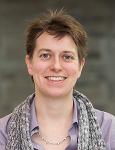 Dr. Pauline Barmby January 23 2020 – PAB 100 12:30 – 1:30pm
Dr. Pauline Barmby January 23 2020 – PAB 100 12:30 – 1:30pm
The 2020 Long-Range Plan for Canadian Astronomy & Astrophysics
A large fraction of research in observational astrophysics relies on shared facilities too large to be operated by any one research group or university. Planning for and funding these facilities requires coordination within the research community. Organized by the Canadian Astronomical Society, LRP2020 is the third in the series of Canadian Long Range Plans for astronomy and astrophysics. LRP2020 is reviewing the field of astronomy and astrophysics, along with associated education, training, and outreach programs, and will produce a list of recommended priorities for the next decade. In this talk I’ll describe the current state of the LRP process, especially as it relates to space astronomy. I’ll describe some future proposed missions and how the LRP interacts with other research fields, the Canadian Space Agency and Canadian industry.
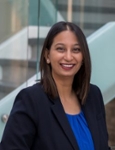 Dr. Parshati Patel January 17 2020 – PAB 100 12:30 – 1:30pm
Dr. Parshati Patel January 17 2020 – PAB 100 12:30 – 1:30pm
Training and Engaging the Next Generation of Space Scientists and Engineers through the Space Explorers Program
The Western Space educational outreach program strives to engage youth to explore the universe and aims to empower children with the basic knowledge and workings of the many branches of planetary science and space exploration. The Space Explorers program promotes experiential learning and since its launch, has engaged more than 600 students through hands-on activities. To assess the potential of the Space Explorers Program to engage youth, camp participants are invited to complete a survey at the conclusion of the program. Survey statements gauge campers' experiences, as well as their interest in the field of space science and technology, thus providing insights into the impact of the program. The survey also allows for the evaluation of programming, camp activities, and facilitators. Based on preliminary findings, the program is certainly on its way to achieving the goal of engaging and training the next generation of scientists and engineers, while exposing them to various aspects of planetary science, space and space exploration. We intend to leverage campers' experiences and recommendations to continue developing robust programs as we move into the next phase of science and technology themed educational outreach initiative.
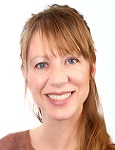 Dr. Holly Capelo, University of Bern January 10 2020 – PAB 100 12:30 – 1:30pm
Dr. Holly Capelo, University of Bern January 10 2020 – PAB 100 12:30 – 1:30pm
Direct measurements of dust-drag fluid instability in connection with protoplanetary disk evolution
How planetary precursors (planetesimals) from out of the dust grains present in gaseous protoplanetary disks remains an open question. While grain adhesion forces bind solids at small scales (micrometers-decimeters) and gravity on large scales (kilometers), bridging these extremes across growth barriers in the meter size range requires an additional solid-concentration mechanism, often assumed to derive from the two-way drag coupling between the gas and solid phases, which results in a 'streaming instability'. I present the findings from ground-based two-phase flow experiments which represent the first and only demonstration of particle concentration via the theorized flow instability. The experiments support the growing consensus that dust-drag instability should occur universally, and derives principally from the differential motion of dust and gas in a mass-loaded fluid. While these results do not prove that planetesimals form by aero-gravitational instabilities, they strongly suggest that streaming-instability-driven turbulence is inevitable, provided that the control parameters can reach critical values. This parameter regime has not otherwise been reached in laboratory studies and neither is it directly addressed by existing theory of particle suspension dynamics. I will discuss the continuation of this research, meant to connect classical approaches to studying granular two-phase flow with the study of astrophysical fluids and planetesimal formation and evolution.
MRO-HiRISE Teams December 13 2019 – PAB 100 12:30 – 1:30pm
WesternU misson operations and training with the HiRISE imager on the Mars Reconnaissance Orbiter: Results from Imaging cycles 339 & 340
Since late 2014, CSA-funded adjunct research professor Livio Tornabene, has led WesternU-based science operations and training for the most powerful and high-resolution imager to photograph Mars: HiRISE. Starting on Oct. 8th of this year, two teams led by himself and PDF Eric Pilles and four trainees (Vidhya Ganesh Rangarajan, Chimira Anders, Leah Sacks and Will Yingling) helped plan 213 new images of Mars over a 4-week period. HiRISE’s 339rd imaging campaign (led by Tornabene) executed on Saturday, Oct. 26th and continued to Saturday, Nov. 9th when it handed off to the 340th imaging campaign (led by Pilles), which continued to Saturday, Nov. 23rd as Mars continued into Northern Summer/Southern Winter. Here they present together their latest exploits, and what they experienced while planning two back-to-back two-week sets of high-resolution images of the surface of Mars from WesternU’s Mission Control facility. Come hear all about it and to see some of their favorite images!
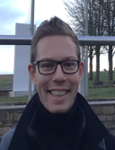 Bryan Southwell November 29 2019 – PAB 100 12:30 – 1:30pm
Bryan Southwell November 29 2019 – PAB 100 12:30 – 1:30pm
An Instrumented Rover Wheel
Barefoot Rover is a research project at NASA-JPL with the intention of assessing the feasibility of a tactile-sensing rover wheel. In doing so, rover safety may be enhanced through in-situ terrain data, and the scientific community can benefit from knowledge of terramechanics parameters. The planetary surface community is also interested in rock and surface pattern detection. My focus for this work is the terramechanic aspect, which is the study of wheel or tracked vehicle interaction with the terrain, where the terrain's properties are of utmost interest. An additional area of research work is applying machine learning methods to the data for in-situ analysis. Detecting different terrains, such as loose sand or duricrust, will help rover drivers avoid unsafe terrain or flag areas for further study. Duricrust is loose sand covered by a layer of hard, or high cohesive strength, soil. MER Spirit broke through a layer of duricrust on Mars and became immobilized. The implementation of a tactile-sensing wheel on future rovers will mitigate driving risks and enhance rover autonomous driving capabilities.
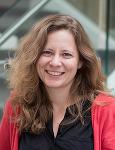 Dr. Els Peeters
Dr. Els Peeters Today, the world is eagerly awaiting the launch of the James Webb Space Telescope (JWST). Hailed as the bigger and more sensitive successor to the Hubble Space Telescope (HST), JWST will similarly inspire the general public and have researchers develop the most innovative approaches to process and analyze observations of unprecedented quality to study the Universe near and far. Given these expectations, the entire world will be watching closely when the first science observations with JWST are presented to the public, and those may well have a Canadian stamp on them. In this talk, I'll give a general description of JWST and its capabilities, and I will highlight how Western is involved in the first science observations to be made by JWS.
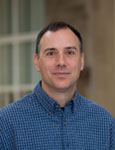 Dr. Paul Wiegert November 15 2019 – PAB 100 12:30 – 1:30pm
Dr. Paul Wiegert November 15 2019 – PAB 100 12:30 – 1:30pm
Interstellar asteroids and comets: what are they and where do they come from?
In 2017, the first asteroid to enter our Solar System from interstellar space was discovered by Rob Weryk (who did his PhD here at Western) at the PanSTARRS telescope. The asteroid is now called 'Oumuamua, a Hawaiian term which signifies 'Messenger from Afar'. Now in 2019 a second visitor, comet Borisov (named after its discoverer) has also appeared. 'Oumuamua was rocky (unexpected), relatively slow (unexpected) and small (expected); while Borisov is icy (expected), fast (expected) and large (unexpected). I'll briefly summarize what we know about these puzzling visitors, and outline the efforts being made at Western to back-track them to their points of origin, somewhere within our Milky Way galaxy.
 Dr. Nick Craine November 8 2019 – UCC 54A 12:30 – 1:30pmPioneering the Stratosphere: High Altitude Benefits from the Evolving UAV LandscapeStratodynamics provides high-altitude earth observation platforms and services enabling new, cost-effective access to the stratosphere. Their recent flight from the Canadian Space Agency's Stratos Balloon Base achieved many firsts in Canadian aviation including: the first release of a UAV from a scientific gondola in Canada; the first UAV flight above 29,000 feet in Class A airspace; and the highest altitude flight of a UAV or remotely piloted aerial system (RPAS). Gary Pundsack and Nick Craine will present the details of the record breaking August 31st flight, discuss their recent NASA flight opportunity award and display their flagship platform called the HiDRON.
Dr. Nick Craine November 8 2019 – UCC 54A 12:30 – 1:30pmPioneering the Stratosphere: High Altitude Benefits from the Evolving UAV LandscapeStratodynamics provides high-altitude earth observation platforms and services enabling new, cost-effective access to the stratosphere. Their recent flight from the Canadian Space Agency's Stratos Balloon Base achieved many firsts in Canadian aviation including: the first release of a UAV from a scientific gondola in Canada; the first UAV flight above 29,000 feet in Class A airspace; and the highest altitude flight of a UAV or remotely piloted aerial system (RPAS). Gary Pundsack and Nick Craine will present the details of the record breaking August 31st flight, discuss their recent NASA flight opportunity award and display their flagship platform called the HiDRON.
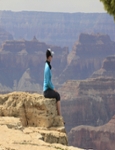 Catheryn Ryan November 1 2019 – UCC 54A 12:30 – 1:30pm
Catheryn Ryan November 1 2019 – UCC 54A 12:30 – 1:30pm
The distribution of organic material in Martian-analogue volcanic rocks, as determined with ultraviolet laser-induced fluorescence spectroscopy
The Biologic Analog Science Associated with Lava Terrains (BASALT) research project (Lim et al., 2019) has been developed to test exploration capabilities and return samples from two Mars-analogue volcanic environments. We used an ultraviolet laser-induced fluorescence (LIF) spectroscopy instrument to detect and characterize the distribution of potential organic biosignatures in samples returned from two BASALT mission deployments and correlate the fluorescence results with a variety of sample properties. These samples represent a range of alteration conditions found in the volcanic environments of Hawai’i Volcanoes National Park, HI, USA and Craters of the Moon National Monument, ID, USA. Samples were also analyzed using scanning electron microscopy with electron-dispersive x-ray spectroscopy (SEM-EDS) to characterize the mineralogy present at fluorescent points-of-interest and confirm the presence of carbon-bearing material. Finally, He-gas pycnometry and micro-computerized tomography were used to determine the porosity of the samples, which could be compared to the results from LIF and SEM-EDS measurements. Some minerals deposited in the sample vesicles through fumarolic activity were found to be highly fluorescent, with time-resolved fluorescence spectra suggesting the presence of organic material associated with these mineral deposits. Overall, samples collected proximate to active or relict meteoric fumaroles from Hawai’i were shown to contain materials with strong evidence for organic deposits, compared to little evidence in samples collected from Idaho.High Altitude Balloon team October 25 2019 – UCC 54A 12:30 – 1:30pm
High Altitude Balloon Initiative
The High Altitude Balloon Initiative began in January 2018 and has launched two separate payloads since its conception. In May 2018 the team launched a ~2 kg payload carrying a suite of various atmospheric sensors to study the environment of the upper atmosphere. While the initial assembly of the team and the launch itself was successful, the loss of GPS data at the apex of the flight complicated the recovery of the payload. The payload was recovered on May 29, 2019 near Grand Valley, Ontario after being discovered in a field. To conduct a second launch in 2019, the High Altitude Balloon (HAB) team partnered with the Students for the Exploration and Development of Space (SEDS)-Canada and the Canadian Space Agency (CSA) to sample microbial aerosols via stratospheric balloon as part of the CSA’s STRATOS program. The ~800, 000 cubic meter balloon travelled to an altitude of 37 km and Westernu HAB’s payload, housed on the gondola, was controlled remotely from the ground during the flight. The gondola was shared by five other experiments running simultaneously. SEDS-Canada had arranged to reserve two spaces on the CSA’s gondola, one of which had been granted to the Westernu HAB team for this year’s launch. The experiment successfully sampled microbial aerosols at four different points during the flight and was returned via helicopter to have the samples preserved as soon as possible. Currently the samples are being analyzed to determine whether any variations exist as a function of altitude
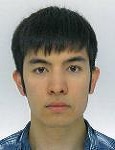 Gavin Tolometti October 18 2019 – UCC 54A 12:30 – 1:30pm
Gavin Tolometti October 18 2019 – UCC 54A 12:30 – 1:30pm
Volcanic Analogue for the Exploration of Mars
In July 2019, Gavin Tolometti traveled to the 2014-15 Holuhraun lava field in Iceland to study its diverse lava flow morphology's and compare them to radar and high-resolution (cm-scale) topographic remote sensing data. Remote sensing data is relied upon when studying the morphology of surface features, including lava flows, on other planetary bodies such as Mars. It is important to understand how to interpret the data because results and interpretations are dependent on the wavelength scale and resolution. Gavin will discuss why it is important to understand and compare different remote sensing datasets to study lava flow morphology and summarize the research that has been completed and currently ongoing at the 2014-15 Holuhraun lava field.
The Holuhraun lava field is situated in the Bárðarbunga-Veiðivötn, one of Iceland’s largest volcanic systems, and is marked as the largest effusive basaltic eruption since the Laki eruption in 1783-84. On the 29th of August 2014, a small 600 m long fissure opened on the floodplain and for four hours basaltic lava erupted onto the surface. Extension of the fissure to 1.8 km occurred after twenty-four hours of inactivity. From the 31st of August to the 27th February 2015, the effusive basaltic eruption occurred and had a maximum discharge rate of ≥350 m3/s, average flux of ~90 m3/s, a total area cover of ~85.4 km2 and an estimated bulk volume of 1.44 km3. The lava field stands as a strong Martian analogue site because of its pristine condition, hosting lava flow morphology's analogous to Martian lava flows, proximity to glaciers and diverting an active hydrology system, which has implications for astrobiology.
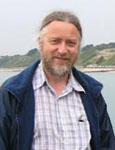 Dr. Phil Stooke– October 4 2019 – UCC 54A 12:30 – 1:30pm
Dr. Phil Stooke– October 4 2019 – UCC 54A 12:30 – 1:30pm
Solar System Roundup
On the 62nd anniversary of the launch of Sputnik 1 and the dawn of the Space Age, Phil Stooke will provide a summary of current events in the solar system. From rovers on the Moon and Mars, and sampling missions to two asteroids, to orbiters at Venus, Mars and Jupiter, there is plenty going on up there and a lot more planned for the near future. Phil will survey these science missions and other developments in space exploration including new rockets and plans for human space flight in the next few years.
 Dr. Gordon Osinski– September 27 2019 – UCC 54A 12:30 – 1:30pm
Dr. Gordon Osinski– September 27 2019 – UCC 54A 12:30 – 1:30pm
Exploring Other Worlds By Exploring Our Own
The world of space exploration is rapidly evolving. More than ever before, the international scientific community is attempting to answer fundamental questions on the origins of life and of the Solar System, by exploring other planetary bodies. There are currently more active robotic space missions than at any other time in history. It is clear that humans will return to the Moon, possibly within the next 5 years. The Moon is the only planetary body, besides the Earth, to have been explored by humans. Currently, the only way we can "explore" Mars and other planetary bodies is via images and chemical data sent back from unmanned orbiting spacecraft and rovers, and through the study of meteorites. Interpretations of other planetary bodies must, however, begin by using the Earth as a reference. This introduces the concept of terrestrial analogues, which are places on Earth that approximate the geological, environmental and/or putative biological conditions on Mars and other planetary bodies, either at the present-day or sometime in the past. From impact craters to hot springs to polar deserts, Canada possesses a wide variety of analogue sites that serve to inform scientific interpretations from space missions through the field of comparative planetology.
In addition to enabling comparative planetology studies, terrestrial analogues allow for the development and testing of technologies, psychological studies for long duration space missions, software and operations architectures, the training of personnel for future missions, and opportunities to engage and educate children and the general public. Analogue missions represent integrated, interdisciplinary field campaigns conducted in terrestrial analogue environments and provide a critical pathway in preparing to return to the Moon.
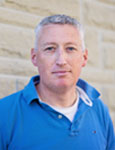 Dr. Ken McIsaac – September 20 2019 – UCC 54A 12:30 – 1:30pm
Dr. Ken McIsaac – September 20 2019 – UCC 54A 12:30 – 1:30pm
